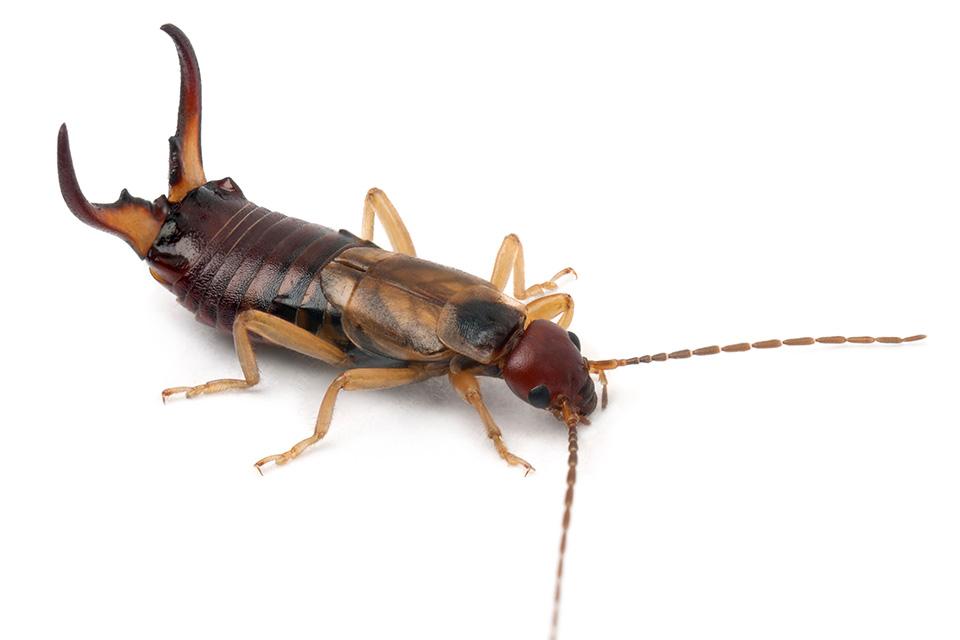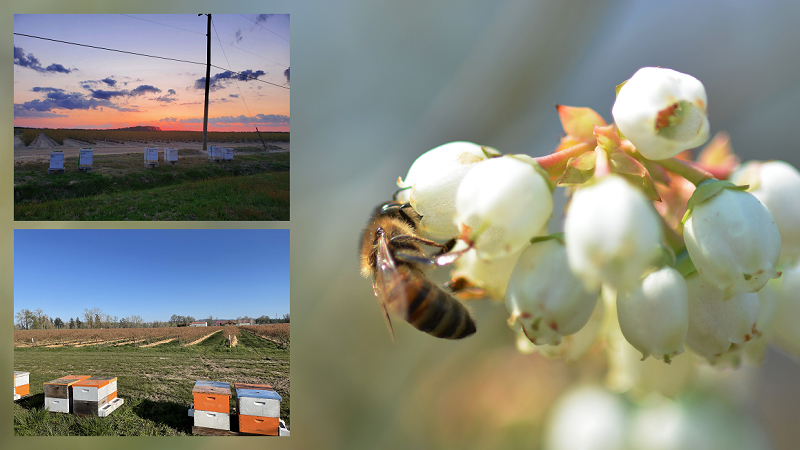Earwigs in the Orchard: Bad for Cherry Growers, But Good for Pome Fruit Producers

Where apple and pear tree growers are concerned, earwigs have great potential for pest control.
Photo by Eric Isselee, Adobe Photostock
One orchard’s bane is another orchard’s beneficial. Such is the case with the earwig. Considered a pest among stone fruit growers, earwigs can help the growers of apple and pear trees. To them, the insect is the natural enemy of their enemies, including aphids, pear psylla, mites, and insect eggs, such as those of codling moth.
Thus, the question for Rebecca Schmidt-Jeffris, a USDA ARS Research Entomologist based in Wapato, WA, becomes: “Can we take earwigs out of orchards where we don’t want them — stone fruit orchards — and release them in apple and pear orchards and see an increase in pest control?”
The answer, as she has continued to prove the last two years, is “pretty clearly, ‘Yeah, you can,’” she says.
Schmidt-Jeffris presented evidence of such at the North Central Washington Tree Fruit Days conference, hosted by Washington State University (WSU) Extension. Her trials with WSU Ph.D. student, Aldo Hanel, in Washington state and Oregon have revolved around the augmentation of earwigs in pear orchards. WSU professors Louis Nottingham and Robert Orpet have also been heavily involved in this research.
IMPROVED PSYLLA, MITE MANAGEMENT
On one hand, she concedes, if earwigs are already heavily populating an orchard, which was the case in her Yakima, WA, trial, it is difficult to establish more of the beneficials. “There is only a little, teeny, tiny bit of a bump, not a huge bump,” she says.
But in the case of her trial with Rick Hilton (OSU) in Central Point, OR, where the orchard basically did not previously boast any earwigs, Schmidt-Jeffris saw increased establishment, whether the earwigs had been released one time in a “big glump” or in smaller point source releases.
“I’m happy with this,” she says. “This is going to be really important for orchards where they’re moving into organic or moving into more IPM-based practices and we need to help them out.”
Equally satisfying, Schmidt-Jeffris says, even in orchards like Yakima in which earwigs were already present, she saw an eventual decrease in pear psylla. This was also seen in some cases of mite management.
“So, earwigs are looking promising,” she says.
Per recommendation of WSU Tree Fruit Extension Specialist Tianna DuPont, Schmidt-Jeffris notes that pear growers need about two earwigs per trap for improved pear psylla control, “so maybe ease back on pear psylla sprays.”
“Which means if you don’t have any, this is a good way to get some,” she says. “I know of a lot of the growers who I’ve been talking to about this the last few years are using this as a great way to make use of labor that is currently on light duty due to injury. If you can use your hands in this [waving] gesture, you can make an earwig trap.”
STATE OF OTHER BENEFICIALS
The current market for commercially available natural enemies focuses far less on tree fruit as opposed to the greenhouse industry, Schmidt-Jeffris says. That said, “I think it’s moving [our] way,” she adds. “They’re starting to realize that we have a lot of big buying power in this industry for beneficials.”
Interested growers can currently purchase the following beneficials, according to Schmidt-Jeffris, several of which she has trialed the last three years, primarily in apple:
Predator mites: “The one that most people are familiar with is the western predator mite. We call them ‘typhs.’ I trust typhs the most of available mites because they are a native species. They are adapted to arid, hot climates. They are expensive and difficult to source because this is basically the only natural enemy on the market that is intended for our industry — tree fruit, grapes, hops — and not the greenhouse market.”
Lacewings: “There are currently two species on the market in the U.S. — Chrysoperla rufilabris and Chrysoperla carnea. Rufilabris is always going to be cheaper; it is probably easier to rear. But we have native species of carnea. Carnea is actually not a species; it is a group of lacewing species that are called carnea because they are very difficult to tell them apart. That being said, there are still companies that will sell you something called “carnea,” and it’s not even in the carnea species group.”
Convergent ladybeetles: “I’ll remind folks that these are wild caught. These are not insectary reared. I am hesitant to recommend wild caught natural enemies because quality can be variable for reasons that the company has absolutely no control of. Also, because they are collecting these in winter, but you are buying them early in the spring, this typically means they’ve been in some kind of cold storage for a period of time and, depending upon how good that company is at quality control, they may not be very healthy when you’re purchasing them.”
Mealybug destroyers: “This is a specific species of smaller ladybeetles that feeds specifically on mealybugs.”
Stethorus: “This one has a lot of availability issues. Last year basically no one was able to purchase these. There are only a couple of companies that rear them. Because availability is non-existent some years or limited, the price is really high.”










